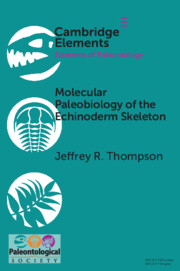Element contents
Molecular Paleobiology of the Echinoderm Skeleton
Published online by Cambridge University Press: 04 November 2022
Summary
- Type
- Element
- Information
- Series: Elements of PaleontologyOnline ISBN: 9781009179768Publisher: Cambridge University PressPrint publication: 01 December 2022
References
- 2
- Cited by

